Menus
- Only two across Germany
- Ralf Gille is known for his passion
- The seat of the Kawasaki W3 has its own shape
- Excellent contacts in Japan
- Technical data Kawasaki W3
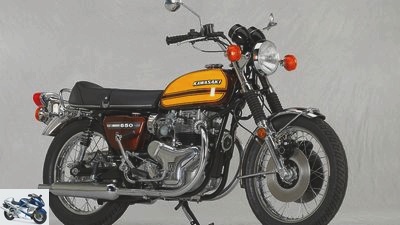
Bilski
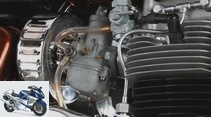
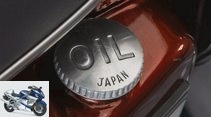
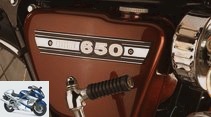
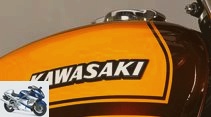
18th photos
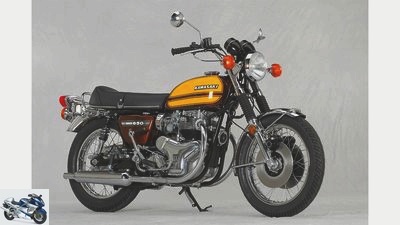
Bilski
1/18
Telescopic fork, double disc in front …
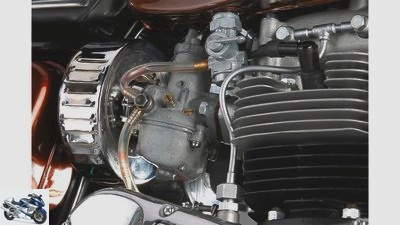
Bilski
2/18
Gille actually built the W3 for himself and spared no effort or expense…
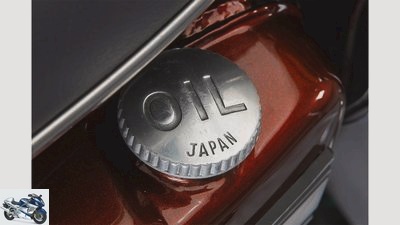
Bilski
3/18
With the W3 the oil tank of the dry sump lubrication with three liters bunkers half a more than with the earlier types.
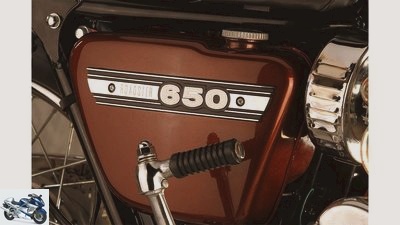
Bilski
4/18
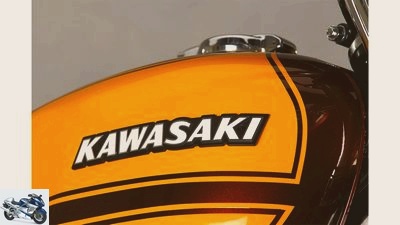
Bilski
5/18
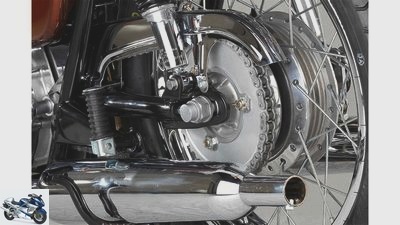
Bilski
6/18

Bilski
7/18
Fork and double disc brake look like borrowed from the Z1, but are not compatible.
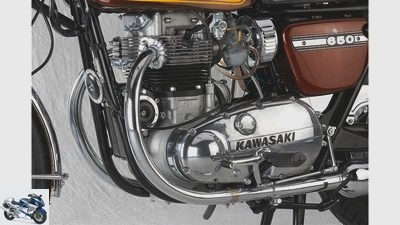
Bilski
8/18
With left-hand gear shifting and disc brakes, the W3 is ideal for everyday use.
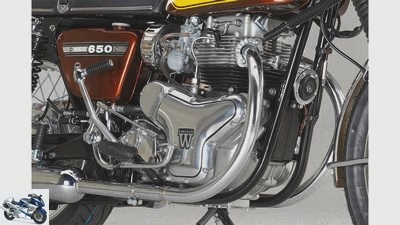
Bilski
9/18
The W3 has a four-speed gearbox with left-hand operation, the linkage of which runs through the swing arm.
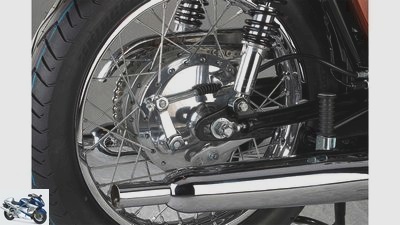
Bilski
10/18

Bilski
11/18
… Ralf Gilles most extensive restoration work to date.
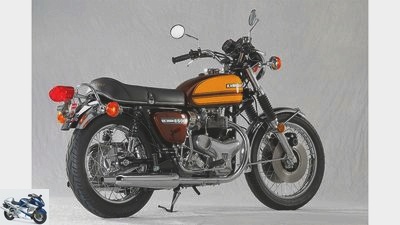
Bilski
12/18
The difficult parts procurement made the Kawasaki W3 closed …
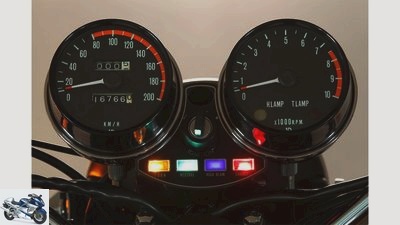
Bilski
13/18
… the arrangement of the indicator lights.
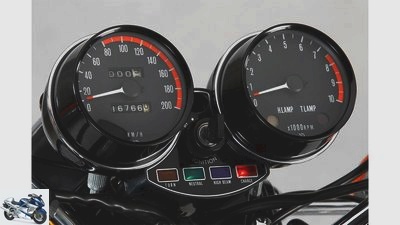
Bilski
14/18
… but actually come from this. But not the dials and …
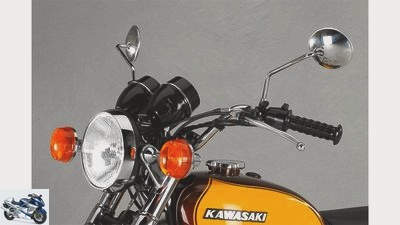
Bilski
15/18
The instrument cups not only look like on the Z1, …
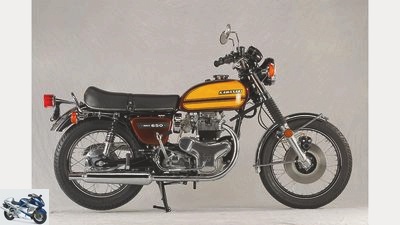
Bilski
16/18
For the true-to-the-original paintwork, Wolfgang Puhler had to be content with a photo as a template.
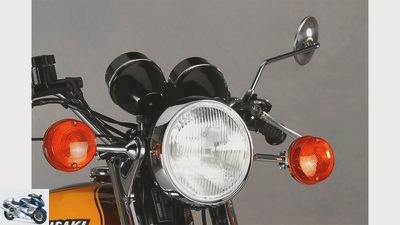
Bilski
17/18
… and the Z1 instrument panel make the Kawasaki W3 look more modern than its design.
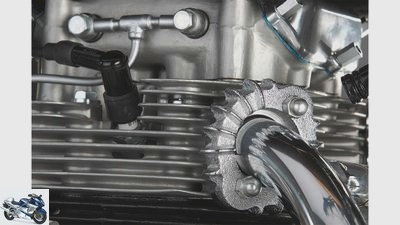
Bilski
18/18
That cannot be overlooked.
Kawasaki W3 in the studio
Only two across Germany
Content of
Whole two copies – more Kawasaki W3 have actually not made it to Germany. Ralf Gille once acquired this 1973 copy in individual parts. And with a lot of skill and even more passion built a breathtakingly beautiful piece of jewelery that is almost unknown in this country.
D.he man has a great weakness, which is now an open secret in the classical music scene. Anyone who knows Ralf Gille knows that his heart – when it’s not beating in two-stroke – belongs to the rustic parallel twins from Akashi.
Buy complete article
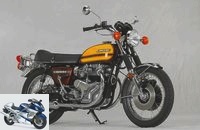
Kawasaki W3 in the studio
Only two across Germany
Kawasaki goes. And that even far beyond the borders of Germany. In the global community of Anglophile Nippon Twins, word got around that Ralf’s weakness for the W models from Kawasaki is also his great strength.
Ralf Gille is known for his passion
Because the Frankfurt-based not only takes care of restorations, but also of the parts supply for the 650 Kawas. Anything that is no longer available in a used condition can either be reproduced on his own or at FineTech Fukai. He even took over global parts sales for the Japanese W specialist.
For example, the 54-year-old process engineering engineer, who with his company (www.gille-restauration.de) is now fully dedicated to classic motorcycles, has rubber parts, cable harnesses and piston sets as well as completely new machines. For example our studio model here, an ultra-rare in Europe Kawasaki W3 from 1973.
Bilski
Gilles Kawasaki W3 has a very eventful history.
It is the last variant of the Kawasaki parallel twin family founded in 1965 with the W1. That was based on a Meguro construction from 1959, the obvious model of which was the BSA A7 (model history in MOTORRAD Classic 8/2014). The Kawasaki W3 was only sold in Japan, Australia and New Zealand from 1972 to 1974. But not in the USA, which is why even specialists like Ralf Gille only get a machine like this with luck. “I bought this W3 in 2010 in Pennsylvania, which was completely disassembled and no longer complete. It is a machine with an eventful history.
A GI took the Kawasaki W3 to the United States after his military service in Japan in 1982. Then in 1987 it ended up with a well-known motor journalist in California, who at some point sold the Kawasaki to Joel Samick, a former AMA racing driver. Samick runs retro tours in Pennsylvania with all two-cylinder motorcycle veterans. I found out about him through an eBay ad in the USA in which he had offered other parts for sale in addition to a W1. Those were those of the W3, and so I struck right away. “
For good reason. Because a Kawasaki W3 is not only relatively rare – a total of only 4430 units were built – but also expensive. In Japan it is very popular because of all W models it has the best suitability for everyday use, with double disc brakes at the front and the four-speed transmission of the W1SA, which is shifted on the left and via a conventional scheme. The telescopic fork and the double disc of the W3 are similar to the components of the Z1, but they are not identical, Gille knows. This also applies to the instruments that house dials with different scales. Other differences to earlier models concern the steering lock and the pillion peg holder.
The seat of the Kawasaki W3 has its own shape
And an additional weight of around 17 kilograms, “which can be felt while driving, because the extra pounds are only at the front”. However, it took almost four years for Ralf Gille to gain this insight. Since he wanted to keep the Kawasaki W3 to himself, he was in no hurry to rebuild it. Especially since some crucial items were missing from the parts package from the USA. For example, parts of the electrical system and the shift linkage.
Likewise the rear fender, the tailpipes and the seat. Which made the restoration true to the original much more difficult because the silencers and the seating furniture on the W3 have their own shape. “Above all, the W3 exhaust with the dampers tapering towards the rear is extremely rare, and there are no reproductions of it,” says the expert, pointing out the difficulties with the Kawasaki W3.
Excellent contacts in Japan
Thanks to his excellent contacts in Japan, however, he was able to find a well-preserved original exhaust through his partners there, which after chrome-plating now shines as new as the replica of the rear fender. “Because of the problematic supply of parts for the W3, this was the most complex W restoration to date,” says Ralf Gille, who, with the exception of the paint and chrome work and the honing of the cylinders, did all the work himself. So the restoration came to a happy end in autumn 2014.
At least for Ralf Eichentopf, who was actually able to talk the W3 off his buddy after two years of heavy digging. In a weak moment, one of Ralf made the other a very strong offer that the other could not refuse. “Well, at least I know that the Kawasaki W3 is in good hands with Ralli”, Gille consoles himself over this. And of course he’s been looking for a GI who might one day take a W3 to America after completing his military service in Japan. If you are toying with a W model yourself, Ralf Gille is the right place for you. Because the man doesn’t just have a soft spot for these Kawasakis. But, as you can see here, there are also very strong arguments.
Technical data Kawasaki W3
Bilski
The 1973 Kawasaki W3 offers 53 hp from 624 cc.
Kawasaki W3 (1973)
Engine:
Air-cooled two-cylinder four-stroke in-line engine, an underlying camshaft, two valves per cylinder, actuated via bumpers and rocker arms, bore 74 mm, stroke 72.6 mm, 624 cm³, compression 9: 1, 53 hp at 7000 rpm, oil bath clutch, Four-speed gearbox, chain drive
Landing gear:
Double loop frame made of tubular steel, front fork, two-arm swing arm at the rear, double disc brake at the front, drum brake at the rear,
Weight:
217 kg with a full tank
Tank capacity 15 l
Contact:
www.gille-restauration.de
Related articles
-
Comparison test of naked bikes BMW R 1150 R Kawasaki ZRX 1200 Suzuki GSF 1200 Bandit
Gragolov Comparison Test Naked Bikes BMW R 1150 R Kawasaki ZRX 1200 Suzuki GSF 1200 Bandit Fat Friends Who upright and unprotected to adventure …
-
On the move with a Kawasaki Z 1000 and Zephyr 1100
www.bilski-fotografie.de 36 photos www.bilski-fotografie.de 1/36 Genetically not related, but they belong to the same family: Kawasaki Z 1000 and Zephyr…
-
Kawasaki KH 400, Yamaha DT 400, Yamaha RD 400
bilski-fotografie.de 27 photos bilski-fotografie.de 1/27 In the well-stocked, clear RD cockpit, there are all the necessary warning lamps, including an…
-
bilski-fotografie.de 9 photos Jacek Bilski 1/9 We can present these perfectly restored Kawasaki H2 models here in duplicate. They come from the first two…
-
Benelli 650 S Tornado and Kawasaki 650 W1
Rivas 24 photos Rivas 1/24 Jurgen Kurz: As a Kawa fan with a soft spot for the Z 650, I had to have one of the rare twins at some point. Rivas 2/24 The…
-
On the move with the Kawasaki Z 650 family
wolf 38 photos wolf 1/38 A very special family outing – on the go with four different Kawasaki Z 650 models. wolf 2/38 The B1 drives beautifully…
-
Kawasaki Versys 1000 driving report
Wright Driving report: Kawasaki Versys 1000 (with video) Kawasaki’s all-rounder now with a large four-cylinder No half measures: For the Versys there is…
-
BMW R 90 S, Kawasaki 900 Z1, Laverda 1000 3C Big Bikes
fact 30th photos fact 1/30 Big bike classics from the 70s – pure fascination. Kawasaki 900 Z1, Laverda 1000 3C and BMW R 90 S driven by MOTORRAD Classic….
-
Kawasaki 37 photos Kawasaki 1/37 Kawasaki 2/37 Kawasaki 3/37 Kawasaki 4/37 Kawasaki 5/37 Kawasaki 6/37 Kawasaki 7/37 Kawasaki 8/37 Kawasaki 9/37 Kawasaki…
-
Kawasaki Z 1000 SX 2017 in the test
13 pictures 1/13 Kawasaki Z 1000 SX model year 2016 and 2017 in comparison. 2/13 …